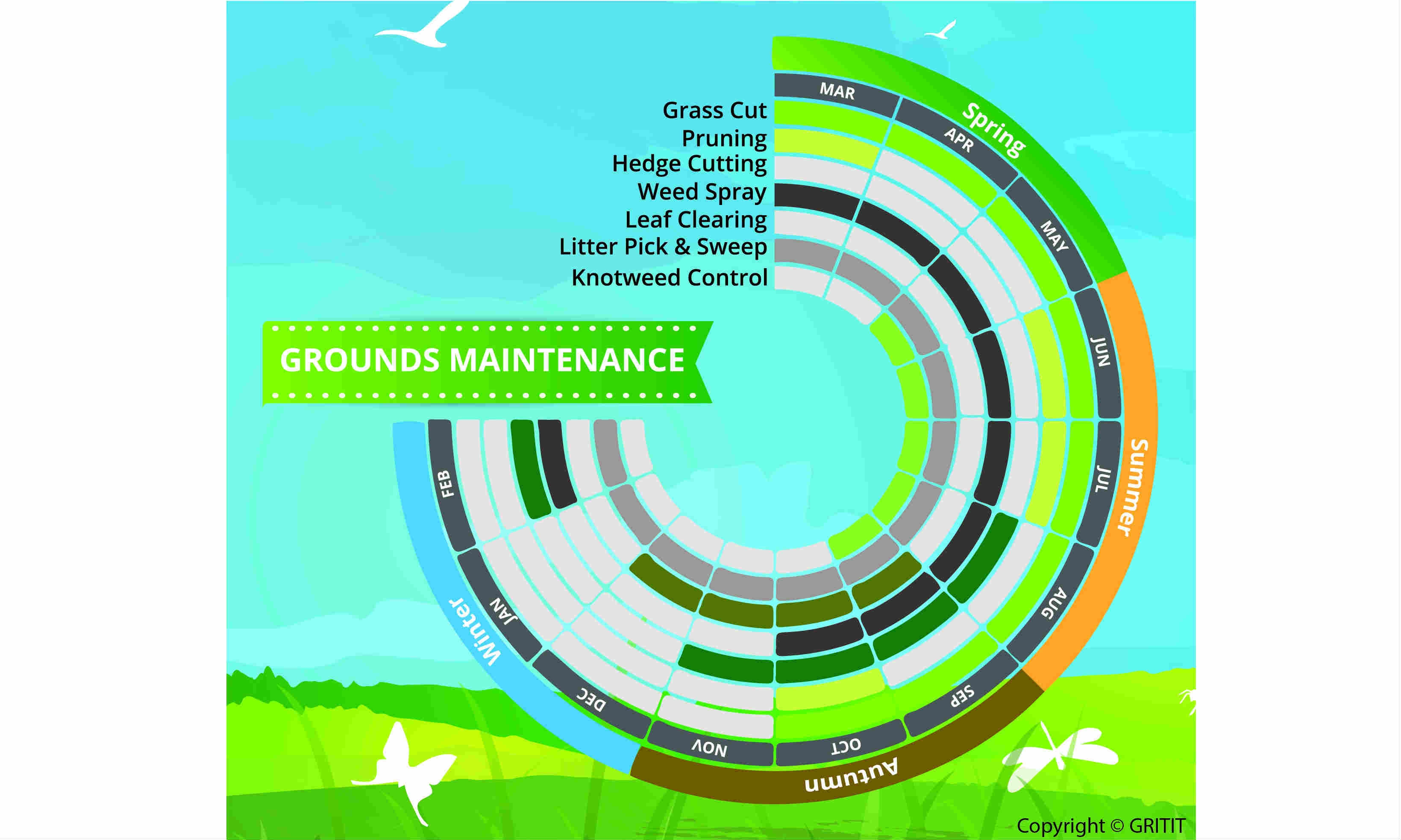Taking the mystery out of seasonal planting
Grounds Maintenance firm GRITIT GM offers a valuable insight into seasonal planning for the FM
If it weren’t for seasons and the unpredictable British weather, life would certainly be much simpler for busy FMs. Grounds Maintenance (GM) commitments add an added dimension of long term planning to managing sites with outdoor spaces but as ever planning and preparation is the key to year round success.
While you don’t necessarily need to become an expert horticulturalist, it is advisable to have some appreciation of the basics and an understanding of what is happening within the grounds at each phase of the year. For example, there’s little point planning a change in hedging at a time when birds are still nesting. Planning your GM in line with seasonal changes is as much about understanding the environment you are responsible for managing - and the ability to plan ahead of time will make the job a lot more straightforward.
To help with your planning process, it is worth mapping out the year, and identifying milestones and tasks appropriate to given periods. As a start, we have created two planners in this article that can be adapted to your own sites and requirements. The Grounds Maintenance planner is a useful reference for tracking your teams’ or contractor’s current work and service reports and what to expect in the upcoming months. The Landscaping planner provides an understanding as to the optimum times to make improvements or changes, such as extending beds, creating more naturalistic areas or planting.
The two planners show that there can be considerably more to grounds maintenance than simply cutting the grass! Indeed, it is understandable why some organisations have tried their best to limit the workload by simplifying their grounds – producing dreary monocultures of lawn, evergreen and bark chips. Gladly there are signs that the trend is changing, however. A growing awareness of the social and environmental importance of diverse landscaping – as well as desire to maximise the value of a site – is encouraging more creative planting and useful spaces.
In many cases – for example, the creation of wildflower meadows – more creative approaches may not actually require a higher level of investment or ongoing maintenance, but realising such plans will demand better year round planning, and a greater degree of structure when specifying and benchmarking the activity of in-house GM teams or contractors.
Indeed, should you decide to bring external contractors on board, the seasonal nature of grounds maintenance can also determine the best times for the tendering process.
GM priorities for managers in the seasons ahead
Autumn
At this time of year you should be looking to review your management and maintenance plans and specifications. It’s also a good time to review the previous year and consider how your grounds are actually used, how you can improve upon next year’s service and opportunities to better meet the organisation’s policies.
Consider collaborating with a landscape expert to develop a comprehensive set of output specifications. This should focus on achieving your desired standards rather than the frequency of visits. Ask your GM provider to show how they can support your organisation’s environmental policy and contribute to workplace wellbeing, while supporting the wider environment.
Remember to review and release PQQ and tender documentation early if procuring for larger contracts.
In terms of the physical site, now is the time to schedule site improvement works such as planting, tree surgery and arboriculture activity.
Winter
As we head into the winter months ensure that any programmes and schedules for improvement works are all in place and that there are plenty of contingency plans for adverse weather events as these may delay jobs.
Ensure that you have carefully selected your GM provider in a thorough procurement process well in advance of the summer months so they are in place by February at the latest.
Make sure that you continue to monitor KPIs for winter tasks and, if you manage an in-house team, ensure your staff training needs have been identified and training providers booked.
Make sure any of your own machinery has been fully serviced and additional resource requirements have been identified and ordered prior to mobilising in spring.
It is important to conclude that while the above sets out a very basic introduction to some of things you should be currently be thinking about, a key consideration is to give yourself enough time now to think of improvements and opportunities to make more of your assets. This applies equally whether you are using you own staff or external contractors.
Refreshing specifications
You may well have an existing set of specifications that you perennially turn to but it is important not to let these become a straightjacket. Provide opportunities for local team members to be more empowered. After all, their input can help to develop more interesting/useful spaces for your staff. And if you do use contractors, you should in most cases expect the same level of engagement and creative input. Indeed, at GRITIT we enjoy taking on such challenges and many grounds maintenance experts will also relish the opportunity to collaborate with their customers, offer more insight and share a greater sense of ownership. Ultimately, better, more sustainable grounds maintenance is all about building better connections – between those responsible for sites, those carrying out the work and the people that enjoy these spaces year round.
Contact us to subscribe to regular content for ongoing GM tips and planning throughout the year.
GRITIT Grounds Maintenance 0800 0432 911, or email This email address is being protected from spambots. You need JavaScript enabled to view it.


